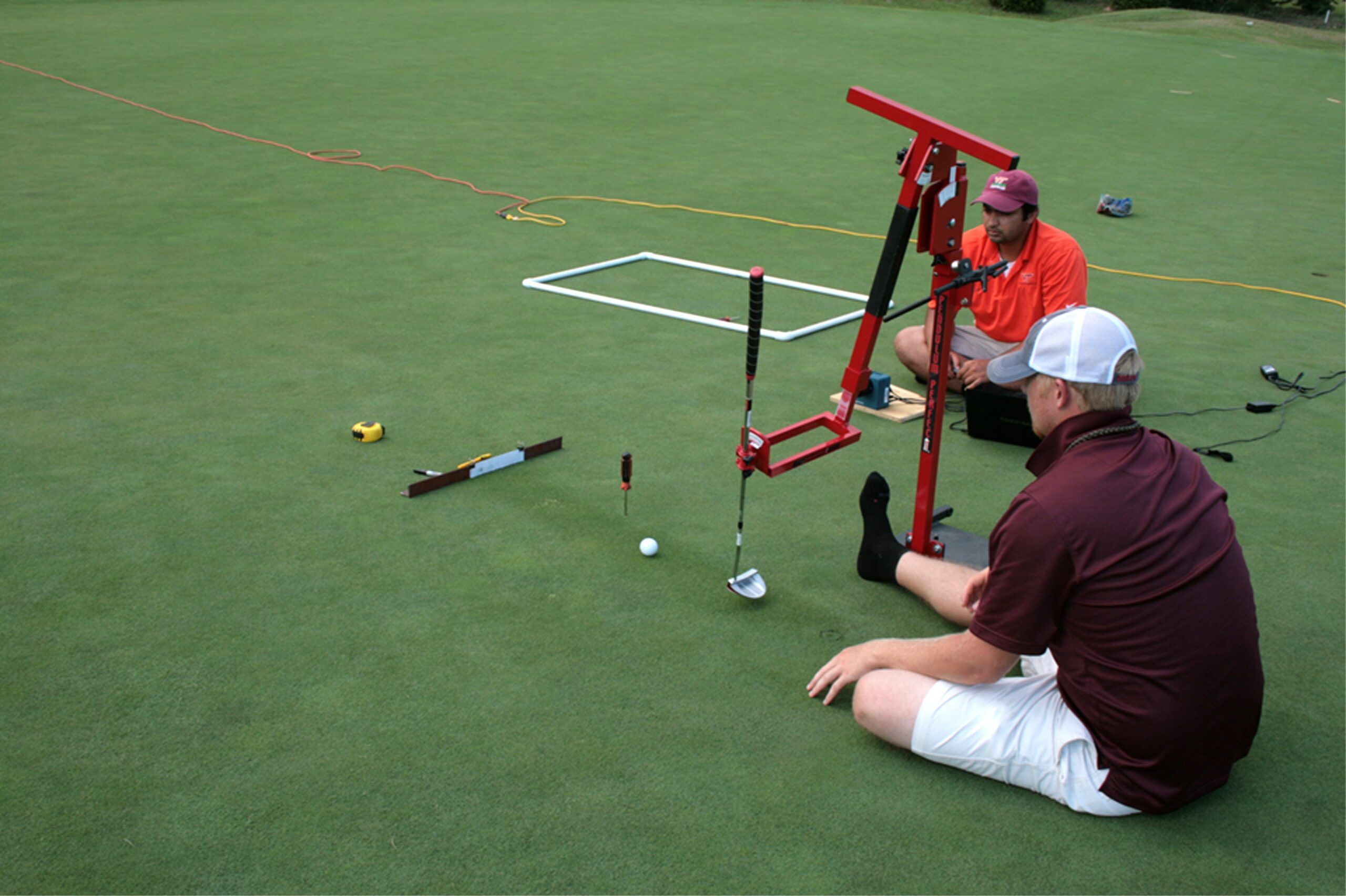Westminster, Colorado, USA
11 June 2024

A Weed Science Society of America (WSSA) member scientist, Shawn Askew, Ph.D., and Virginia Tech professor is developing novel ways to control weeds on turf grass and improve golf ball roll on greens. This topic is proving timely since the United States Golf Association is in the process of releasing a new tool (GS3) to measure comparative attributes of ball roll on greens.
“We have conducted research using a putting robot and high-speed video to measure how weedy annual bluegrass affects directional imprecision and bounce of golf balls following a simulated putt on creeping bentgrass golf greens,” says Askew. “By controlling annual bluegrass on golf greens, or using management strategies that promote uniformity of mixed-species turf canopies, we can improve pace-of-play and the golfers experience.”
His team’s published research results show that an isolated patch of annual bluegrass causes the ball to miss the intended target by one inch for each 10 feet of ball roll. “That would cause a golfer to miss a perfectly executed putt at a distance of just over 10 feet,” notes Askew. When asked about the impact of this research, he jokes that the work “gives golfers a valuable new excuse for missed putts.”
In addition to increasing awareness of weeds and their impact on golf turf, his research team has developed novel, organic ways to control weeds on turf grass. “My lab is also exploring techniques that use machine vision and robotics to control weeds with cryogenic ‘liquid air’ and lasers,” he says. “The advent of machine learning is affecting even weed science, and the future will yield a variety of robotic applications to tackle challenges in turfgrass management.”
Typically, turf managers use cultural practices and plant growth regulators, rather than herbicides, to minimize the impact weeds such as annual bluegrass have on aesthetics and playing condition on Northern greens, points out Askew. “The greens are by far the most important area on a golf course and weeds like annual bluegrass are one of the most troublesome issues limiting their management,” he says. “In fact, annual bluegrass has been embraced as a desirable plant due to the inability to control it in some areas. A wide variety of research has been conducted to better understand annual bluegrass with respect to genomics, ecological impacts, biochemistry, and even golf putt kinematics.”
Askew and his research teams are exploring the convergence of weed science and high-end golf. “When putting green turf is managed at less than 1/10 inch, any surface anomaly can impact visual appearance and function of the green,” says Askew. “The COVID-19 pandemic showed us how valuable outdoor activities like golf can be for society. Much time, money, and effort are invested as golfers feed this passion of chasing a small, white ball to that hole on the green. They don’t deserve to have their playing experience disrupted by weeds.”
For more information about WSSA and innovative weed science solutions, visit www.wssa.net.